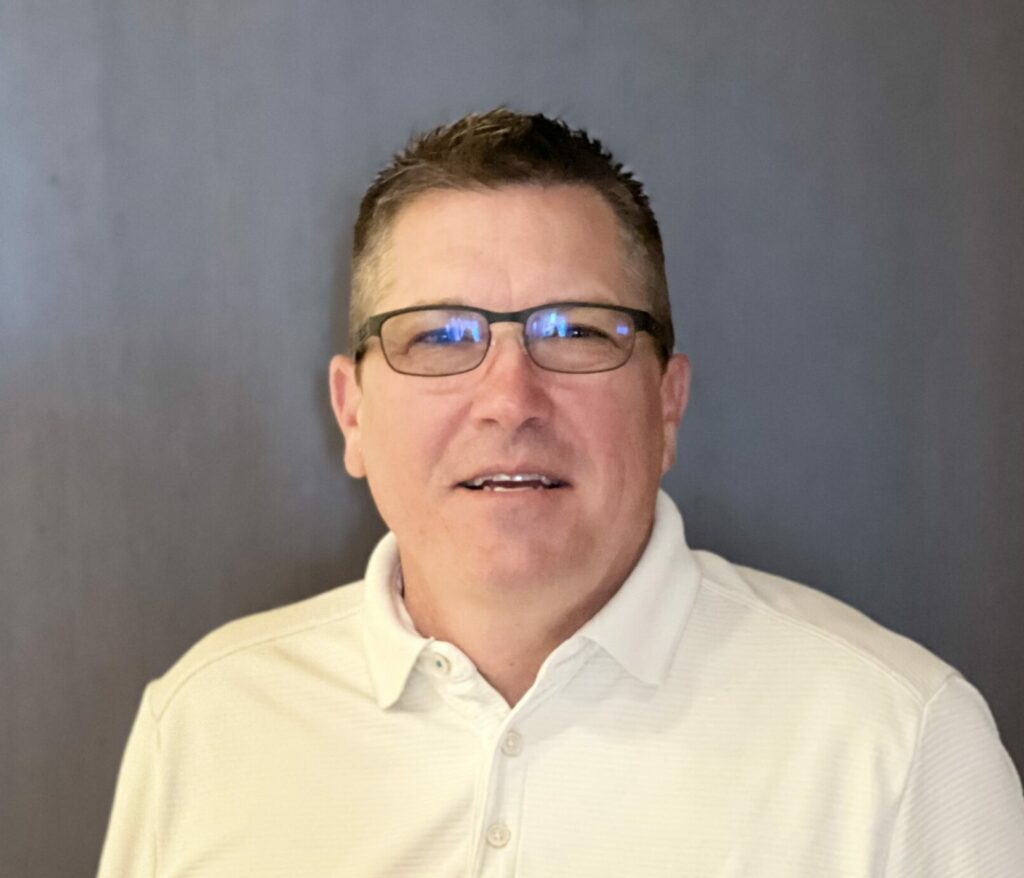A CONVERSATION WITH MEDIMATRIX EXPERTS, CTO-KEN KERN, AND VP OF ENGINEERING-ANUJ ROHATGI.

Ken, being a developer at your core, what has it been like for you being in a CTO role? This industry has always been fast paced due to the nature of diagnostic imaging. Working with the MediMatrix team to make sure the technology used is secure and reliable is important, along with making quick decisions about customers, new development, engineering advancements and integration projects.
In addition to code development there are quite a lot of moving parts involved in the role of a CTO. Tell us what it was like getting acclimated to those different areas. For some time, we were doing things a certain way because it just worked, not necessary because it was the best way. It was a challenge to take on so many changes at once, AWS, Zoho, Containers, to name a few, but I feel the company is in a much better position to focus on product development.
In wanting to bring the MediMatrix platform to the next level, you surely have had some help behind the scenes. Our whole team has been here a long time and very familiar with the product. Its amazing when I see developers continue to learn a new skill to improve the product. They have always embraced new technologies to help our customer’s operations.
Sounds like the development team has been instrumental in moving the solution along while you’ve been getting up to speed in areas such engineering, compliance, and specialized integration projects. How have you had time to manage all these areas? ASG has provided support through several processes, from the network move to AWS, ongoing compliance requirements, and hiring. Having Anuj on board has been critical to setting up the AWS and build infrastructure. In a very short 6 months, he has not only learned the different components, he is now taking action to improve processes.

Anuj, some may not know, but as Ken mentioned, you’ve been with MediMatrix for almost 6 months now. Tell us a little bit about yourself.
I started my career in technology and programming as a very early child learning to program on a Tandy computer. While that was my first foray into some technical field, post graduation I began working as a full time developer at a diverse set of companies in the Austin, TX area. Some of my fond memories were at National Instruments, ERCOT, and General Motors. At NI I was able to really dive deep into database design, development, and tuning and get my first taste for building targeted front end web applications, CX & UX tooling and tracking, and large volume data manipulation. Those data skills really transferred into my time at ERCOT where I helped build and develop a core processing pipeline for time series data for the energy market for Texas. Not only did I get to build something that was affecting customers every day and supporting critical government infrastructure, I got to push my core developer language skills which pushed upward into advanced architectural design. For the first half of my career, it was spent really honing my engineering skill sets and growing into understanding complex technical systems and finally going into more senior architect roles.
Working at General Motors gave me a new perspective about the end state of a company, when you’ve grown and scaled an organization, technical talent, and complex processes to run a landmark in the industry. I was lucky enough to have started at smaller startups and worked my way at increasingly larger companies that gave me a really great insight into how company growth occurs. I began early on translating my engineering skill sets and applying them to engineering organizations and there is more overlap than one may expect. I was no longer building massive enterprise systems supporting a global set of vertical industries but building out engineering organizations and scaffolding for people to grow, live, and be empowered to move toward large visionary goals. This continued to my roles at Charles Schwab, Procore, and so on where I helped take these smaller organizations and build solid foundations for growth and direction. Those early experiences drove me into leadership roles and gave me a strong supporting structure that has helped in my success and those I’ve led. I make engineering teams move at the speed of the business that relies on them.
Wow you’ve worked in several different industries. What do you find most intriguing about SaaS companies like MediMatrix? I find how SaaS has evolved over the past two decades to be very interesting. As always, learning about the history and what factors drove changes in an industry is really important. With SaaS, a few things went hand in hand together that pushed the evolution which were transformation of infrastructure responsibility, platformization, and big data. While there may have been SaaS companies before either of these three things existed, the acceleration to SaaS becoming a defacto operational model was heavily influenced by these becoming very mature technologies.
With MediMatrix, I see a huge potential and opportunity. Healthcare in general is a competitive area, and it is vast and complex. Technology and SaaS companies have been competing in this space for years, but companies who have been successful have to have more than relying on technology that at this stage is becoming a commodity. I see MediMatrix having that differentiator. We are successful not because we are a SaaS company, but because we have something cultivated of value that can continue to root and grow along with the changes we see coming in the future to our industry.
And how has it been working with Ken and the team? I imagine there was some excitement having someone with your expertise join MediMatrix.
It has been really great working with everyone here, and Ken has been a big help. Ken has taken this company on a journey for decades, and kept the ship running in the direction it needed. Ken has been a wonderful partner in helping me come up to speed and learn the tools of the trade he has learned here in working in this industry and I’ve appreciated the knowledge I’ve gained.
When I joined, the team was very welcoming and forthcoming with information. I was able to learn from each of them about our technology stack, key customers and clients, and how the company has matured and grown over the years. Understanding that history is important, as it explains a lot of how we got to where we are. The team was very excited to have someone who was familiar and had hands-on experience with the new level of technology companies are expected to leverage. These included Cloud infrastructure, CI/CD tools, key development architectures and practices and so on. It wasn’t long before the team saw those key components come to bear fruit and the sheer acceleration I was able to put into the hands of the team by giving them more autonomy and agency in their work created a lot of buzz and excitement.
With experience you tend to notice where a company has its shortcomings, and all of them have something that can be worked on or improved. However, the team at MediMatrix have one of the most difficult and fundamental problems that can plague a company in excellent standing, and that is culture.
Now that you’ve been with the company for a while, what sort of projects have you and the development team been working on? One of the first things I like to do is assess how and where our development and overall end to end delivery slowdowns are to find where we can improve or have leaps in productivity and innovation. The more free time people have to spend on solving real business problems, the more time we have to work on innovating. The additional productivity and time also gives us the breathing room to maintain, adjust direction, and absorb the growing scale of our customers’ needs.
With that introspection done, we launched some major efforts to modernize our development pipeline and CI/CD process. This addresses some key challenges we have been facing and opens up a lot more opportunities for change ahead. Specifically, we have now got a very modern code repository with some advanced functionality and build capabilities. This means we can now make deployments at a massively quicker pace than before. Coming soon to that, is adding fully automated end to end testing and automated deployments to customers. This not only improves time to delivery, scaling, and resilience, but helps our support team have more advanced tools with quick turnarounds. Moving us from trickle releases with major features to the more modern release paradigm of constant flow of fixes, updates, and features delivered daily will put strong confidence in our customers minds about quality and value.
This foundation was a key cornerstone for our development and engineering efforts, and it has been a major achievement. It is opening the doors for more modernization work and laying the groundwork for our data reporting and analytics services. It also means we can begin to scale with our customers’ organizations. We’ve been working on moving to an architectural design to make sure we can also support our sales teams and provide on-demand training tools, sandbox sites, and eventually self-service signup.
For the future, we’ve already got some big ticket items in play. Advanced data access and granularity, real time on-demand scaling and processing, and data analytics. While these are still many months away, we have to think about them now so we know how we take the next step in getting there.
Ken, what was it like to bring in Anuj to help lead some of these initiatives? Our team has always leaned and relied on each other and Anuj will fit right in.
Anuj, from a development and engineering perspective, where do you see MediMatrix and their solutions over the next year? I see some pretty major engineering feats coming that will enable some exciting new product features. As our engineering foundation is settling, some of our ongoing larger features are going to start releasing like single billing across multiple MediMatrix instances, Portable Connect Lite for our smaller customers that need the core functionality, advanced analytics and reporting, unified user management and some others.
While these are the most visible changes to our customers, we have been working diligently this past year and will continue to increase investment into our security and health compliance certifications. We are committed to being trustworthy, secure, and validated by compliance agencies around health data to make sure our customers know we are a supporting partner that values our customers data and privacy as much as they do.
Ken, how do you see MediMatrix in the next year? Similar to Anuj, I’m excited about how much knowledge has been brought in to get to the point to start executing these large initiatives. The overall goal of technology is to improve the processes somewhere. Maybe we want to speed up development, or faster support. Looking forward, I feel multiple goals will be met because Anuj is moving us to a modern way of managing development.
